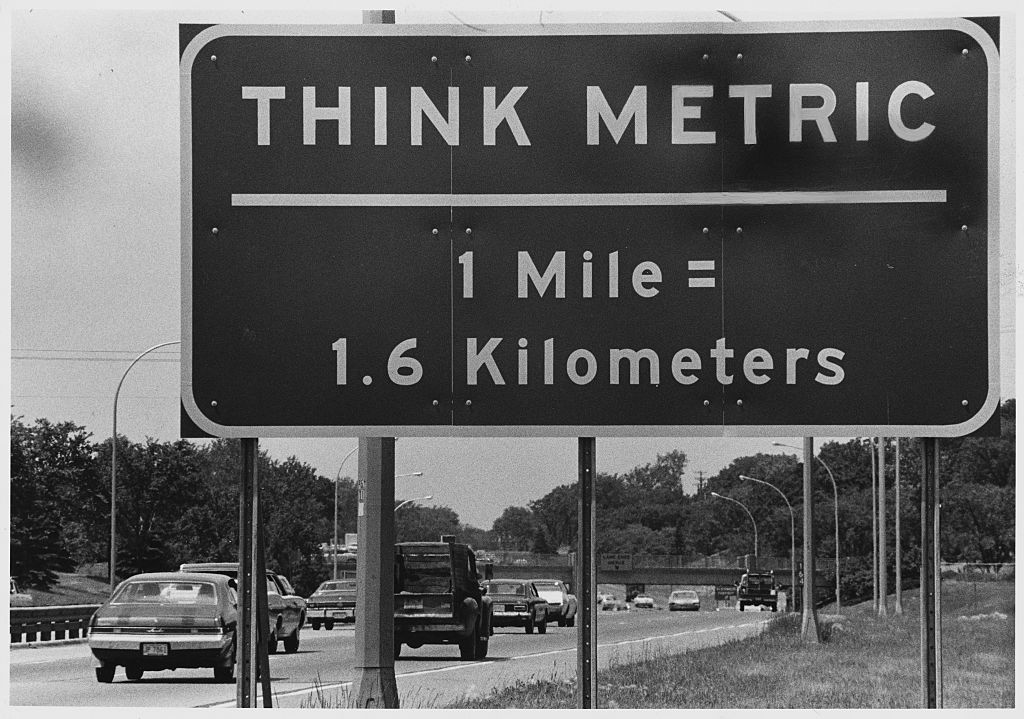Metric Vs. Imperial: A Weighty Debate in Britain
Feet, inches, and pounds may be making a comeback in Britain.
By: Mark Angelides | September 30, 2021 | 579 Words
Politics can influence so many areas of life – even things you might not expect, like weights and measures. In the United Kingdom, the British government has said that traditional imperial weights and measures may be making a comeback to shops across the land.
For a few decades, Britain belonged to the European Union (E.U.) – a group of countries in Europe that share some laws. In January 2020, Britain officially left the group. Now that it has left, Britain can bring back some of its old customs.
The Metric System

A traffic sign near the US border in Quebec reminding travelers from the United States that metric measurements are used in Canada. (Photo by Owen Franken/Corbis via Getty Images)
The E.U. has a law that states metric measurements must be displayed. If imperial measures are being used, the metric ones must be visible, too.
The metric system is a system of weights and measures invented in France in 1795, shortly after the French Revolution. Metric measurements use a very regular system, based on divisions of ten.
Millimeters, centimeters, meters, and kilometers are used to measure distance. There are ten millimetres in a centimeter, 100 centimeters in a meter, and 1,000 metres in a kilometer.
Grams and kilograms measure weight (a kilogram equals 1,000 grams).
Millileters and liters are used to measure volume – with 1,000 millileters in a liter.
Almost every country in the world now uses the metric system, since it is very standardized and regular. Many countries use it in combination with their old ways. For example, most people in the U.S. still use the imperial system, but some special fields use metric – for example, medicine can be measured in “milligrams.”
The Legal Aspect
Now, it seems that pounds, ounces, and inches have a chance to come back in Britain.
In 1995, E.U. law said businesses in Britain had to display metric as well as the imperial measurements. Now that the United Kingdom is no longer a member of the club, some argue that there is no need to continue using metric – or keep following the E.U.’s other laws. Some are proposing that the law on metrics should be repealed.
The Arguments
Some argue that young people have grown up using the metric system and that going back to imperial would just make life difficult. However, the change would only mean that business owners can choose freely to display one, or the other, or both. If people want to keep using metric, they can – but they won’t have to.
What about the argument about a burden on folks who grew up using metric? Well, the language of imperial measurements never really went away. When people discuss height, most use feet and inches. All British road distances and speed limits are displayed in miles rather than kilometers.
 A Legacy of Language
A Legacy of Language
There is a lot of history and culture in the old measurement systems. For example, the mile came to the United Kingdom through the ancient Romans, who measured 1,000 paces as mille passus, from the Latin mille (thousand).
The language of pounds, ounces, inches, and feet is so deep in the culture that it would be impossible to switch systems entirely from one to the other. The reverse is also true – it would be a mighty task to convince folks not to use meters. Should people have the freedom to use both?
















